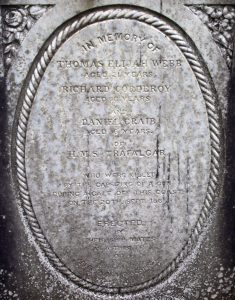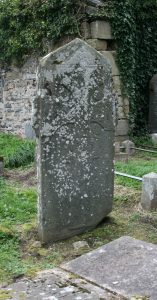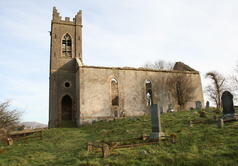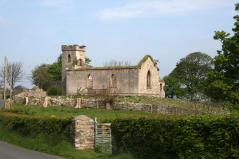The Channel Fleet was the Royal Navy’s contingent of warships tasked with defending the English Channel against alien aggressors from the end of the 17th century until its disbandment in 1909.
By the start of the 19th century its main task was to prevent incursions by the French navy but following the cessation of the Napoleonic Wars and a thawing in relations between Britain and France the raison d’être for the Channel Fleet diminished.
However during the mid 19th century the Channel Fleet still represented a significant naval deterrent, with one eye still on France. During this period the Fleet visited ports around Britain and Ireland, attracting huge public interest such was the scale of what was effectively a Naval Circus.
At the end of July 1861 the Channel Fleet had planned a visit to Lough Swilly and Lough Foyle. First stop on the trip was Lough Swilly. The “Londonderry Sentinel” painted an excellent colour piece of the visit, as reprinted in The Times of Monday, July 29 1861.
No sight could be more beautiful. Crowds collected from many points to witness the magnificent spectacle. These seven wooden walls of old England now displayed their graceful lines, their beautiful symmetry, and gayest bunting to the admiration of hundreds, while the waters of the Lough, as if proud of their freight, reflected their spire-like masts, their thousand flags and streamers, and their stately outlines in the glassy waves beneath. Now the ships are off Dunree Fort, on which the red cross of England unfurls its folds to the wind. As each man-of-war passes a salute is fired, and in the intervals the martial strains of the well-trained bands on board each vessel are borne to the shore. The scene was of the most thrilling description, and its interest was not lessened by the fact that this exhibition of the ‘pride, pomp, and circumstance’ of the maritime greatness of our country was unattended by the more direful accompaniments of ‘glorious war.’
At half-past 4 the fleet were off Buncrana, having arrived in the following order:-
The Revenge, 91 guns, 800-horse power, Captain Charles Fellows, bearing the flag of Rear-Admiral Smart, senior Admiral of the fleet.
The Edgar, 91 guns, 600-horse power, Captain Mends, bearing the flag of Rear-Admiral Erskine(white), second in command.
The Conqueror, 101 guns, 200-horse power, Captain Southby, C.B., and Aide-de-Camp to the Queen.
The Aboukir, 91 guns, 403-horse power, Captain Shadwell, C.B.
The Hero, 91 guns, 600-horse power, Captain Ryder.
The Trafalgar, 90 guns, 500-horse power, Captain Dixon.
The Centurion, 80 guns, 400-horse power, Captain Rogers, C.B.
The Porpoise gunboat, commanded by Lieutenant-Commander John Brasier Creagh, Knight of the Legion of Honour.
As night set in the shores of tough Swilly were brilliantly lit up with bonfires. The glare brought out the ships into fine relief, affording a spectacle easy to be enjoyed, but difficult to describe. All the inhabitants of Buncrana likewise illuminated their dwellings, and on every side great enthusiasm was witnessed. It was most gratifying to see the cordial reception given by the people of Ennishowen to the fleet, and both officers and men feel much pleased and complimented at the reception they have met with. Perhaps in no other place since they have left Spithead have they received such a hearty welcome, and the short experience had of the members of the fleet gives reason to believe that it will be richly deserved.
Some idea may be formed of the might and majesty of England’s navy, from the fact that these seven vessels carry 636 guns, with crews amounting in number to 6,250 men, being more than the entire population of Strabane. The entire horse-power is nominally 4,200, but is equal to double these figures. Three vessels properly belonging to this portion of the fleet are absent on other service – namely, the Donegal the, Diadem, and the Emerald.
This spectacle will produce a profound and lasting impression on the peasantry of Donegal, and the fame of it will spread throughout all the mountains and glens of the west.
The visit however was cut short which left the good burghers of Derry feeling short changed as reported in The Times just two days later on Wednesday, July 31.
The sudden recall of the Channel Fleet has surprised everybody, and been a sad disappointment to many. The Mayor of Derry had invited the officers to a public dinner in the Corporation-hall, and the people of Belfast were looking with eager expectation to the appearance of the fleet in their own Lough, when the last of the ships was observed to weigh anchor on Monday morning, and sail for Plymouth. So unexpected was this movement and so hasty that about 200 of the men were left behind, with a steam tender to pick them up and convey them to their departing ships. Conjecture is busy as to the cause. Was Government afraid that the crews would fraternize with the Tenant-right men of Donegal, or did they apprehend a French invasion of England?
Just two months later in late September the Royal Navy was in a position to compensate the towns of Belfast and Derry with a rescheduled visit.
On Thursday, September 19 1861 The Times reported that:
The people of Londonderry have at length been gratified with a visit from the Channel Fleet. The members of the Corporation, with their ladies and friends, paid a visit to the Admiral on Monday. An address was presented, and complimentary speeches were delivered on both sides.
And two days later on Saturday, September 20 :
The Derry Standard says it is impossible to speak in terms of overstrained compliment of the courtesy, urbanity, and kindness of the Admirals and officers of the Channel Fleet during their stay in Lough Foyle to the crowd of visitors of all ranks who during four or five days thronged the ships incessantly from early morning till a late hour at night. It sees much utility in periodical visits of the fleet to the Irish ports, as such a gigantic exhibition of British power would awe the disaffected, stimulate the courage of the loyal, and make the tax-paying public feel that they get substantial value for their money.
Following their visit to Lough Foyle the Channel Fleet set sail for Berehaven in Co. Cork where The Times reported on October 2nd that six ships of the Fleet had berthed following heavy storms the previous week.
There are two graves in Christ Church Lower Fahan cemetery related to the visit of the Channel Fleet to Lough Swilly.
The first is that of 2nd Lt. Royal Marines, John W. (second name illegible due to a repaired fracture in the headstone), aged 20 of HMS Edgar who drowned in Lough Swilly on July 25, 1861.
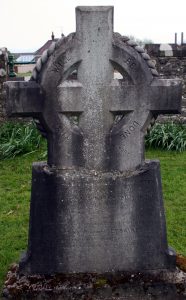
The second grave is that of : Thomas Elijah Webb, aged 21, Richard Corderoy, aged 16 and Daniel Craib also aged 16, all from HMS Trafalgar who died when a gun capsized in a gale September 20, 1861. This date coincides with the return visit of the Channel Fleet when it visited Derry.
